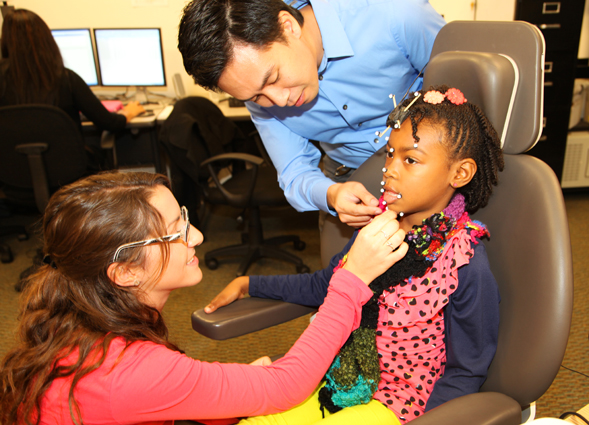High-tech Cerebral Palsy Research
An SDSU professor uses Hollywood technology to research facial movements and speech-language development in children with cerebral palsy.

In a speech, language and hearing sciences research lab at San Diego State University, children with cerebral palsy and those who are typically developing are experiencing a certain kind of fame.
Speech language professor Ignatius Nip is researching and analyzing the interaction between facial movements and speech-language development in these children using the same motion capture technology that transfers actors expressions to computer-generated film characters.
“No one has looked at the speech movements of children with cerebral palsy using this technology,” Nip said. “We can use this information to help speech-language pathologists understand how to help their clients communicate better.”
Nip, along with student research assistants, is performing speech and language testing on children between the ages of 1 to 18 years old. It’s all made possible because of a three-year grant worth nearly $450,000 from the National Institute on Deafness and Other Communication Disorders.
High-tech research
The research lab is similar to a movie set. Eight cameras cross two walls, all focused on the seated participant. Approximately 15 reflective markers are placed on the child or adolescent’s face, including the lips and jaw.
Those markers reflect infrared light that is picked up by the cameras. This information is then sent to a computer that turns the data into a 3-D image of the participant’s face, similar to what you would see on an animator’s computer in a major film studio.
To examine participants movements during speech, different words and phrases are displayed on a projection screen in front of them. They are asked to read and repeat the words and phrases so that Nip and his research team can collect and analyze their movements.
Originally, Nip anticipated 15 participants with cerebral palsy and 15 who are typically developing. The research has received such a positive response that Nip has increased both participant goals to 50.
“The research helps us understand how well children with cerebral palsy are understood by listeners ... so that we can help them become more effective communicators.”
Student support
Six student researchers work with Nip in his lab, three graduate students and three undergraduates. It’s an experience that SDSU senior Lucia Kearney is grateful to have.
“I started out doing data analysis in Dr. Nip’s lab, but I never expected to have the level of knowledge and involvement that I have gained working with him,” said the speech, language, and hearing sciences major. “He is truly passionate about his research and has been a great mentor.”
The students work as clinical lab assistants. They participate in the data collecting processes, work with participants one-on-one and analyze results.
Nip said the research lab provides the students with valuable skills, especially for those who will go on to work in a clinical setting.
Communicating with cerebral palsy
Many people with cerebral palsy, a motor disorder that can affect the entire body, have difficulty speaking.
“Researching mouth movements in both groups will help us understand the underlying cause for speech difficulties in children and adolescents with cerebral palsy,” Nip said.
Early results suggest children with cerebral palsy make larger mouth movements and have difficulty being precise. Nip has discovered that even those who have no observable speech difficulties make these larger mouth movements.
Nip said, “The research helps us understand how well children with cerebral palsy are understood by listeners, so that we can create more effective speech therapy techniques and help them become more effective communicators.”
Speech and Language Research Lab

VIEW SLIDESHOW



